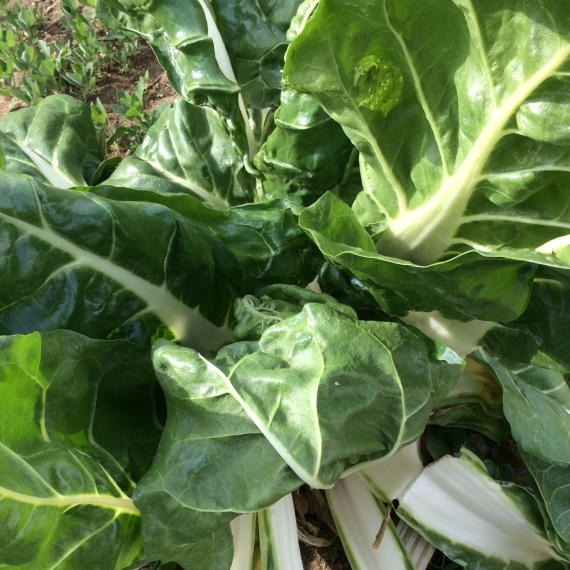Years ago I wrote a review of Six Seasons: A New way With Vegetables. It remains a cookbook that I refer back to periodically and from which I have derived a lot of useful concepts. One of my favorites is the use of a “pad“ of some proteinaceous material, often whipped seasoned ricotta cheese or seasoned nut butter, underneath a salad to catch the dribbles of delicious dressing and add substance to the meal.
In this particular case chef McFaddens idea came back to me when I had nothing planned for lunch and was very hungry. Available in the refrigerator were a bag of washed and dried arugula leaves, a jar of the tahini dressing that I always keep around in warm weather, and the remains of a bowl of hummus, eating down to about half a cup in the bottom of the bowl. I decided that this would be my pad. I piled arugula leaves on top and drizzled tahini dressing over the leaves, and ate it. Simple as that. I was so eager to eat something that I had not scraped the little dried bits off the side of the hummus bowl, and that turned out to be such a good thing that I featured them in the photograph, because they were little areas of concentrated flavor when I scraped them up while eating. The hummus in the bottom was delicious on its own but was greatly improved by the arugula and the tahini dressing that dripped down to it. Very simple, and a really good reason to pick your salad greens when they are ready, wash and spin them, and keep them ready in the refrigerator. You’ll eat a lot more of them that way.
Tahini dressing is frequently found throughout the Middle East, in Israel, in northern Africa, and in many kitchens in America because it is so tasty and easy to make. There are probably as many variations as there are cooks to make it. I am very attached to my own formula but I will tell you where it deviates from the classic one and you can make your own decisions.
There are probably as many variations as there are cooks who make it. I am very attached to my own formula but I will tell you where it deviates from the classic one and you can make your own decisions.
Start with very good tahini. I like the Soom brand best, and it is hard to find in many areas but easily available online. Or use your own favorite. Stir it up smooth, put a half cup in the bowl of a little mini prep food processor, add a clove of garlic and 2 tablespoons of lemon juice, process until the garlic is thoroughly chopped, add a half teaspoon of salt and a quarter cup of Greek yogurt and process a minute more, and add water a couple of tablespoons at a time as you continue to process. When the water hits the tahini, it will magically become very thick and creamy, and then will gradually thin out as you add more water. When you have achieved the consistency that you want, stop adding water. Check if it needs more lemon juice and salt by tasting, and then add a pinch of roasted ground cumin. I don’t advise using raw cumin. In warm weather I always keep some cumin around that is roasted in a skillet just until it turns one shade darker and then ground in the spice grinder, but you can leave it out and add a dash of ground chipotle chile for a different but equally good effect. The yogurt is a bit unusual in tahini dressing, but I came across it a long time ago on a wonderful trip to Egypt and liked it and have been using it ever since. If you do not wish to try this, just substitute water and you will have the classic Israeli dribble sauce. Keep it in the refrigerator and it would be good for at least a week. It thickens when cold, but just beat in a little water with a fork until it’s back to the consistency that you want.
I have a mini-prep in the kitchen because I use it constantly for chopping garlic and ginger and other small tedious jobs, but if you don’t happen to have one, just chop the garlic finely with a knife or crush it with a little salt in a mortar and pestle, and use a whisk or fork to beat the yogurt and water into the tahini.
The hummus salad as described is vegetarian, and if you leave the yogurt out of the tahini dressing the whole dish becomes vegan. Your call.









